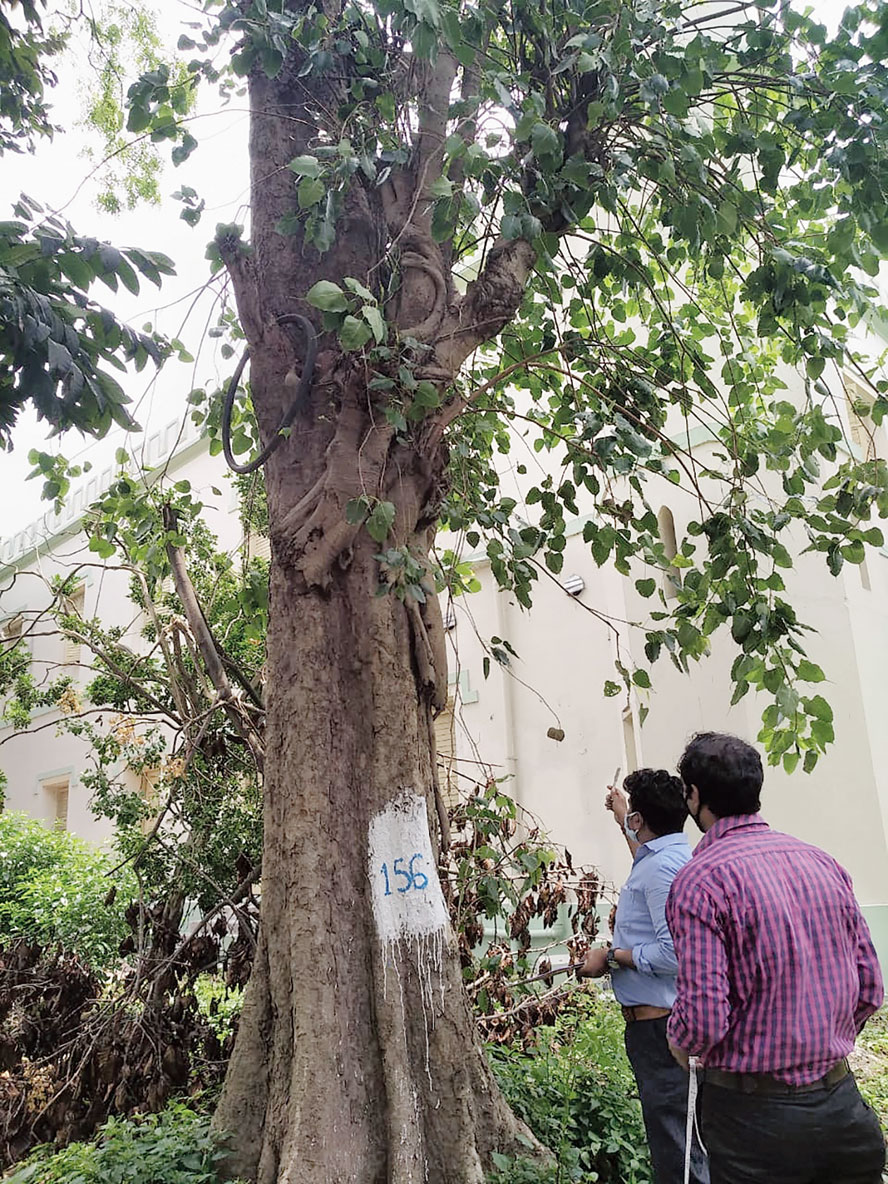The 164-year-old IIEST Shibpur has 2,610 trees on its 121-acre campus, according to a census the institute had carried out days after Cyclone Amphan had struck and uprooted many trees.
Of the 2,610 trees at the Indian Institute of Engineering Science and Technology, 2,251 have been found to be alive, 281 were uprooted in the cyclone and the rest 78 are dead, a seven-member committee that conducted the census has said in its report.
The report submitted to institute director Parthasarathi Chakrabarti has listed the number of every variety of trees on the campus that is next to the Indian Botanic Garden.
The census was carried out as the institute was struggling to figure out the types of giant trees that had been uprooted on May 20 and to understand the scale of damage to biodiversity, an institute official said.
The campus has Mango (708), Krishnachura (162), Banyan (110), Mahogany (40), Debdaru (696), Neem (128), Peepul (90), Radhachura (72), Sisham (18), Jackfruit (222), Jaam (118), Arjun (86), Jarul (64), Segun (16) and other trees (80).
The committee has recommended a string of measures to take care of the trees to “preserve and enrich the ecosystem on the campus”.
Horticulturist D.T. Bhutia, whom the institute had engaged to save some of the trees uprooted in the cyclone, said the trees were uprooted because of poor upkeep and the committee’s recommendation must be followed.

Some of the marked trees. Picture courtesy: IIEST
“Most of the trees wilted following lack of regular pruning, which is a must to maintain the canopy weight; and application of nutrients and fungicide to prevent infections in the roots,” Bhutia, who is the assistant director of the horticulture wing of Central Public Works Department, said.
Concreting the area around the root is also to blame because it comes in the way of the expansion of roots, deep into the soil, he said. “Removal of weeds regularly is a must.”
Director Chakrabarti said: “We will hold regular consultation with horticulturists so that the recommendations of the committee can be implemented. We have been able to save some of the trees with the help of horticulturists.”
Some of the uprooted trees were more than 150 years old.
The Indian Botanic Garden authorities had allocated almost 21 acres on its southeast corner to the Society for the Propagation of Gospel. This had led to the birth of Bishop’s College. The institute was established in 1856.
Calcutta Civil Engineering College, which was set up at the Writers’ Buildings in 1856 after spending some years at the erstwhile Presidency College, moved to the present campus as The Government College, Howrah, in 1880.
Subsequently more land was acquired and the campus grew to 121 acres.
A member of the committee said each tree had been given a number sequentially, followed by labelling the tree with its unique number. The date and number in month and year format has been marked on the tree.
“The number has been marked in blue and the date in pink. The location of a tree has been done in two ways: locations were noted for every tree by its GPS coordinates and additionally marking a known landmark within the campus,” the member said.











